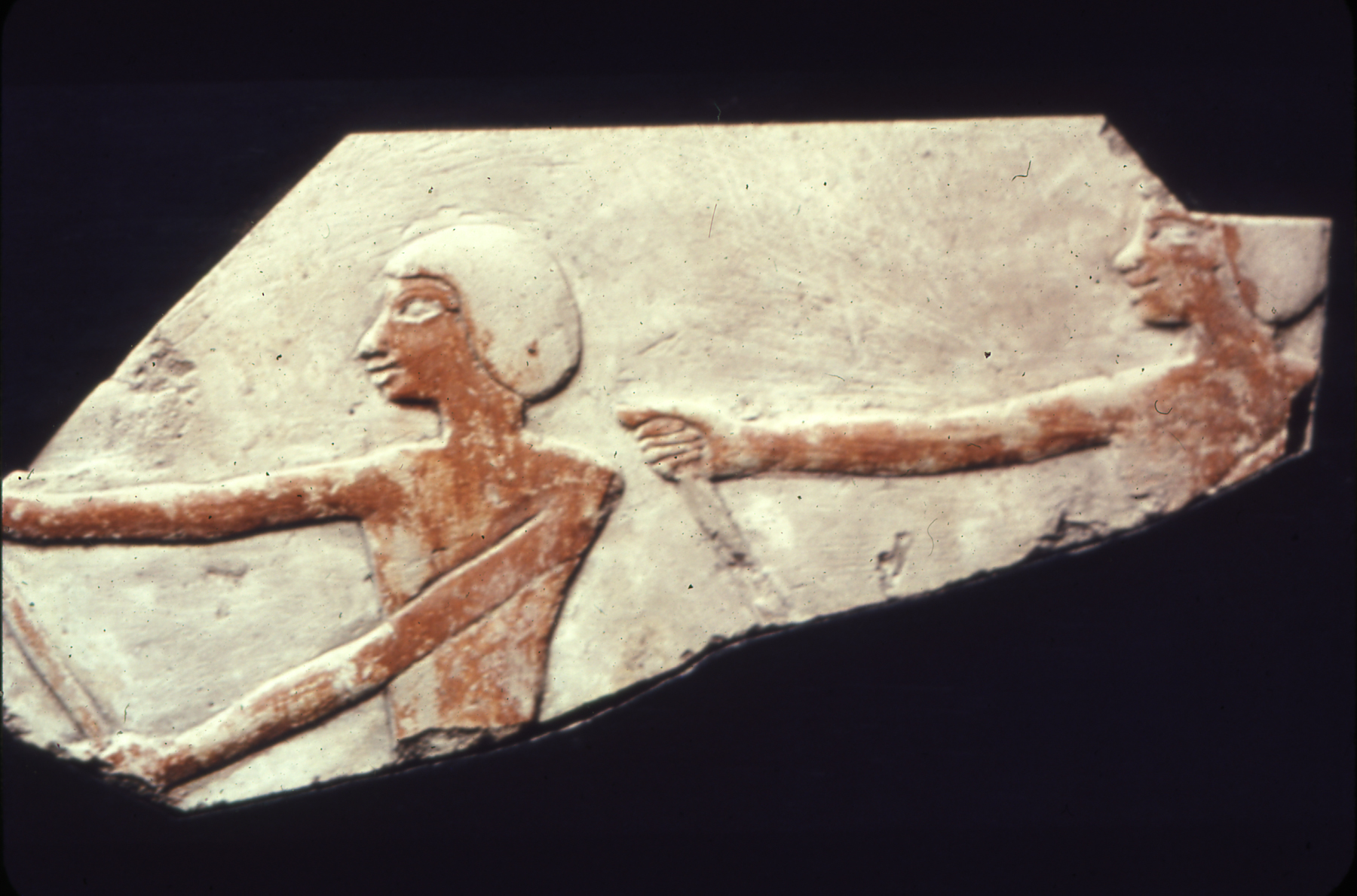Wall Fragment Relief with Men Rowing
(Ancient Egypt and Nubia )
This wall fragment is carved in low relief. It depicts two men with oars in their hands, and with their bodies painted in red.
The fragment comes probably from the southern, lower terrace of temple of queen Hatshepsut in Deir el Bahari, where the transport of her obelisks from Asswan to Thebes is represented. This transport was done with large ships and these oars men belonged to the crew.
Provenance
Provenance (from the French provenir, 'to come from/forth') is the chronology of the ownership, custody, or location of a historical object. Learn more about provenance at the Walters.
Dikran Kelekian, New York and Paris [date and mode of acquisition unknown] [claimed from Dehr-el-Bahari]; Henry Walters, Baltimore, 1930, by purchase; Walters Art Museum, 1931, by bequest.
Conservation
| Date | Description | Narrative |
|---|---|---|
| 5/1/1950 | Treatment | cleaned |
| 9/24/1975 | Treatment | cleaned |
| 10/24/1988 | Examination | examined for condition |
| 10/25/1988 | Treatment | repaired |
| 5/10/2011 | Treatment | repaired |
Geographies
Egypt, Western Thebes, Temple of Hatshepsut (Deir el-Bahri) (Place of Origin)
Measurements
H: 3 x W: 5 7/8 x D: 2/8 in. (7.6 x 14.9 cm x 0.5)
Credit Line
Acquired by Henry Walters, 1930
Location in Museum
Not on view
Accession Number
In libraries, galleries, museums, and archives, an accession number is a unique identifier assigned to each object in the collection.
In libraries, galleries, museums, and archives, an accession number is a unique identifier assigned to each object in the collection.
22.102




